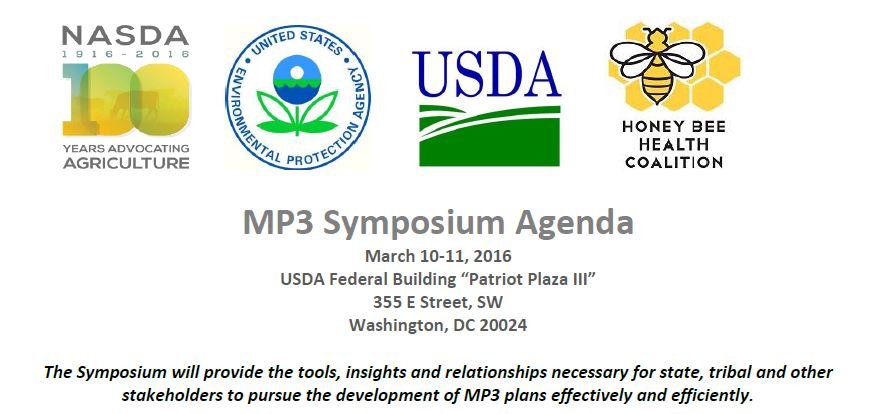Bee Culture’s reporter at the symposium captured comments and remarks during testimony yesterday at the Pollinator Protection Symposium being held in Washington DC. Representatives from many facets of agriculture were present, including beekeepers. Eventually a video of the symposium will be available so all comments can be heard, but below is what we were able to capture on the fly.
“Citrus in Florida is about honey production, not crop pollination.” Steve Dwinell, FL Dept. of Ag
The pesticide label is the law, and the MP3s cannot negate federal law.” Michael Goodis, EPA
“MP3s can be a good tool for communication, but the pesticide label is the ultimate protection. Beekeepers have issues with IGRs (insect growth regulators) with no warnings at all for bees and fungicides with no notification warning on the label. We need effective, clear labels.” Gene Brandi, ABF
Rose Kachadoorian, OR Dept. of AG, “ think of the Plan as a living document.”
George Hanson, Oregon Beekeeper, “ I was part of the Oregon Plan where some of us wanted to have pesticide use mapped, and others balked at that. So, then beekeepers stated if pesticides are not mapped, why do beekeepers need to be mapped. Besides mapping hive locations does not protect native pollinators.”
Jennifer Berry, Univ. of GA, “ As we developed our Plan we got push back from some who wanted language describing the “historical losses of bees of 100-150 years ago. We responded this Plan was about today’s issues with bees, so we declined adjusting the Plan’s language.”
Randy Verhoek, AHPA, “At the end of the day it is the farmer who decides if bees live or die: it is their farm. We need better labels on IGRs, and education is critical to communicating with farmers and beekeepers. The last resort is moving bees.”
Jim Jones, EPA, “Government can act as a convener in presenting the idea of State Pollinator Plans. There are multiple factors affecting honey bees, unless we solve the bee health problem the heat will not come off pesticides.”
Mike Goodis, EPA, “ . . . expect a decision based on the 113,000 comments received to the proposed Acute Risk Rule for bees under contract pollination, and those not under contracts later this year.”
Jim Gray, NDSU Ext. Service, In North Dakota’s Plan applicators “misinterpreted the 48 hour notification and thought they could then apply pesticides. We spent a lot of time educating applicators that they were misunderstanding the notification aspect.”
Andy Whittington, MS Farm Bureau, He encouraged all State Ag Leaders to find out “why bees are in your state: crop pollination or honey production.” He stated he “does not see an issue with pesticides in Mississippi.” Although he stated three farmers in Mississippi in one county have told beekeepers bees are too much of a hassle, and told them to move their bees out. He also shared this about his Flag the Pollinator Program: “An aerial applicator told me he does not need a flag to mark hives, they stand out well enough in a field for him to see them, it was just he never gave any thought to them before now.”
Mike Aerts, FL Fruit and Vegetable Assn., “ He knows of no bee kills since they implemented the Plan.”
Liza Fleeson, VA Dept. of Ag, In developing your Plan you “need to know the pest pressures in your state.”
Barb Bloetcher, OH State Apiarist, We “can’t teach beekeepers fast enough.”
Jack Peterson, AZ Dept. of AG, “The Plan has to work through the growers and beekeepers.”
The Symposium has been recorded and filmed, so it will be on the internet at the HBHC webpage soon.









